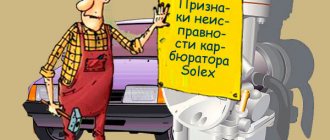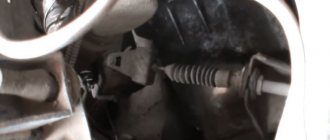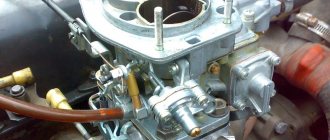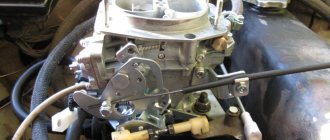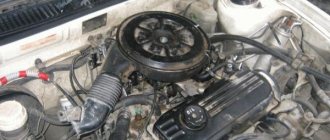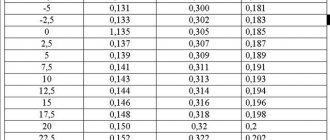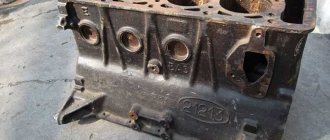A carburetor is an important element of a car's fuel system. Its main task is to prepare the air-fuel mixture and seamlessly transfer it to the engine combustion chamber. Solex 21073 is one of the best designs of an emulsion two-chamber carburetor. It consists of two main elements: a massive lower part and a lighter lid. Taking into account the increasing requirements for environmental safety and decisions of the European Union Commission, all manufactured cars must comply with Euro 2 and Euro 3 standards. The Solex carburetor allows you to fulfill these rules.
Carburetor DAAZ 21073 - device
The device of the Dimitrovgrad Automotive Aggregate Plant is designed for mixing fuel and air and consists of two main components:
- Frame;
- Top cover.
The device is also based on a float chamber for balancing the level of fuel supplied to the diffuser, an accelerator pump, a forced idle economizer and an econostat. The top cover contains: an emulsion tube or emulsion wells, fittings designed for atomizing fuel in the diffuser, as well as an air damper necessary for cold starting of the power unit. The Solex 21073 carburetor on the Niva is installed and configured from the factory, and its design and calibration data provide good dynamic performance with minimal fuel consumption.
Calibration data
| Name | 21073 stock | 21073 mine | 21053-*** | 21053- | ***-20 | |||
| 1st camera | 2nd camera | 1st camera | 2nd camera | 1st camera | 2nd camera | 1st camera | 2nd camera | |
| Engine capacity | 1700 | 1500 | 1500 | 1600 | ||||
| Main diffuser | 24 | 24 | 24 | 24 | 23 | 24 | 23 | 24 |
| gtzh | 107,5 | 115 | 115 | 115 | 102,5 | 115 | 107,5 | 110 |
| GVZh | 150 | 135 | 150 | 135 | 150 | 135 | 140 | 165 |
| TJ XX and move on. System 1 | 39 | — | 42 | — | 39 | — | 40 | — |
| TJUN | 45 | — | 35 | 40 | 35 | 40 | 45 | 40 |
| Kulachek UN | 4 | 7 | 4 | 5 | ||||
| TJ EMR | 40 | — | 40 | — | 40 | — | 40 | — |
| Choke cam | 6 | — | 6 | — | 7 | — | 3 | — |
| T/W ratio | 0,717 | 0,852 | 0,767 | 0,852 | 0,683 | 0,852 | 0,768 | 0,667 |
| Total t/v ratio | 0,781 | 0,807 | 0,763 | 0,713 |
Carburetor calibration data 21073-1107010 | ||
| Options | first camera | second camera |
| Mixing chamber diameter, mm | 32 | 32 |
| Diffuser diameter, mm | 24 | 24 |
| Main dosing system: fuel jet marking air jet marking | 107,5 117,5 | 150 135 |
| Emulsion tube type | ZD | ZC |
| Idle system and transition system of the first chamber: fuel jet marking air jet marking | 39 140 | |
| Second chamber transition system: fuel jet marking air jet marking | — — | 70 140 |
| Power mode economizer: | — | 70 |
| Econostat: conditional fuel jet flow rate fuel jet marking spring compression force at a length of 9.5 mm, N | — 40 1,5±10% | — |
| Accelerator pump: nozzle marking, fuel supply in 10 cycles. sm3 cam marking | 14 — 4 | — — |
| Starting clearances: air damper, mm throttle, mm | 3,0 | — |
| Marking of the choke control lever | 6 | — |
| Hole diameter for vacuum corrector, mm | 1,2 | 1,2 |
| Needle valve hole diameter, mm | 1,8 | 1,8 |
| Diameter of the fuel bypass hole into the tank, mm | 0,70 | 0,70 |
| Engine crankcase ventilation hole diameter, mm | 1,5 | — |
Scheme and principle of operation
The types and modifications of carburetors for a given car can be very different, but the principle of operation remains the same.
When starting the engine cold, the driver closes the choke to limit the flow of air and increase the amount of gasoline. This makes it easier to start and brings the speed necessary for stable operation.
Carburetor 21073 DaAZ device and principle of operation: diagram of the design and operation of the carburetor I - first chamber; II - second chamber; 1 — accelerator pump drive lever; 2 — adjusting screw of the starting device: 3 — diaphragm of the starting device; 4 — air channel of the starting device; 5 - solenoid shut-off valve; 6 — idle fuel jet; 7 — main air jet of the first chamber; 8 — idle air jet; 9 — air damper; 10 — sprayer of the main dosing system of the first chamber; 11 — accelerator pump nozzle; 12 — nozzle of the main dosing system of the second chamber: 13 — econostat nozzle: 14 — main air jet of the second chamber; 15 — air jet of the transition system of the second chamber; 16 — channel for balancing the float chamber; 17 - float chamber; 18 — needle valve; 19 — calibrated hole for fuel bypass into the tank; 20 — carburetor fuel filter; 21 — fuel supply fitting; 22 — power mode economizer diaphragm; 23 - fuel jet of the power mode economizer; 24 — ball valve of the power mode economizer; 25 — float; 26 — econostat fuel jet with tube; 27 — fuel nozzle of the transition system of the second chamber with a tube; 28 — emulsion tube of the second chamber: 29 — main fuel jet of the second chamber; 30 - outlet of the transition system of the second chamber; 31, 33 — throttle valves: 32 — slit of the transition system of the first chamber; 34 — outlet of the idle system; 35 — carburetor heating block; 30 - adjusting screw for the composition of the idle mixture; 37 — engine crankcase ventilation fitting; 38 - fitting for supplying vacuum to the vacuum ignition regulator; 39 — vacuum selection fittings for the recirculation system; 40 — main fuel jet of the first chamber; 41 — emulsion tube of the first chamber; 42 - ball valve of the accelerator pump; 43 — accelerator pump diaphragm.
Read also: Installing a Focus 3 radio
During the warm-up process, air intake is increased to reduce speed and eliminate interruptions. Thus, the air damper opens completely and the amount of gasoline is reduced. Other methods of warming up are not provided for by the design.
Gasoline is supplied through the fuel filter to the float chamber, and then to the main metering system of the mixing chamber. The scheme for pumping air and mixing it with gasoline in the diffuser occurs due to the vacuum that occurs during the operation of the valve mechanism and pistons, compressing and pushing out the working mixture.
The second chamber system is designed to increase air flow to the nozzle when the engine is running under heavy load, when the speed is high.
To ensure that the engine runs stably at idle, and at low speeds to prevent it from stalling and eliminate interruptions, an idle system is provided. And to maintain the level of fuel used in the Solex 21073 carburetor, there is a whole scheme for the operation of the float system. Let's consider the operation of each system separately.
How does Solex differ from Ozone and Weber?
The main difference between Solex carburetors and devices of previous families is the possibility of installing it on transversely located power units with the float chamber forward. This installation option made it possible to eliminate the leanness of the fuel mixture when the car enters a turn, climbs, or during sudden acceleration.
In addition, Solex has a completely different float chamber design. It has a two-section design, which allows the device to be used both on front-wheel drive cars and on classic cars.
Solex carburetors are reliable and maintainable
A little history
A new carburetor was needed when the front-wheel drive VAZ project was being developed. The transverse arrangement of the engine did not make it possible to install the old OZONE carburetor, which was used for the “classic”. But the development of the French company Solex, after a little “finishing with a file,” went off without a hitch. The production of new carburetors began at the Dimitrovgrad Plant (DAAZ), where French equipment was installed and the production process was launched under a Solex license.
The design of Solex carburetors made it possible to install them on engines of different types and power, slightly changing some parameters. So, the most common was the Solex model 21083, which was installed on a 1.5 liter engine. VAZ 2108, 2109. For “classics” with a 1.45-1.6 liter engine. modification 21053 was developed, structurally similar to Solex 21073, designed for the VAZ 21213 Niva with a powerful 1.7 liter engine. And even for Moskvich with a 1.5 liter engine. Solex 21041 was installed, and for 1.8 liters. – modification 21041-10, suitable for both Volga and UAZ.
Selection of types of jets for Solex 21073 carburetor. Everything you need to know
As a rule, they select the types of jets for the Solex 21073 carburetor while adjusting it on the engine. Some drivers sometimes think that if a dream has come true, and Solex is finally installed on the car, then all problems will be resolved at once. But it was not there! The main work only begins after installation. Solex, designed to save you money on fuel resources, in order for it to function correctly, it also needs to be finely tuned.
It’s good if you know a carburetor mechanic. And if not? You can try to make the adjustment yourself, but for this procedure you need to know at least more information about the carburetor itself.
Washing machine inlet valve
The filling valve of the washing machine allows you to draw in water, preparing the equipment for washing. The valve can be in 2 functional positions: open and closed. More often it is closed. When current is applied to the valve coil, an electromagnetic field is generated, creating optimal conditions for its opening. When the rod is tightened, the membrane opens. Having gained access to the dispenser hopper, the incoming water washes away the washing powder, which will later be poured into the washing machine tank.
As soon as the required amount of water is collected, the supply of electricity to the coil stops, and along with it the water supply stops.
The design of the Solex 21073 carburetor on the Niva
This mechanism is a device for mixing the fuel-air mixture. This mechanism is very simplified, unlike the injector. The carburetor consists of only two main parts, one of which is the body and the other is the cover. The carburetor also includes a float chamber, a pump, and an economizer, which is responsible for regulating the fuel supply in order to save it. Inside the housing there are two fuel chambers and diffusers in which a fuel-air mixture is formed. On the carburetor cover there are special fittings for supplying gasoline to the carburetor and studs for attaching the air filter. Also in the cover of the Solex 21073 carburetor there is a needle valve for the float chamber. With the help of these parts the level of fuel consumption is regulated.
An air damper is installed inside the carburetor, which mechanically regulates the air supply to the chambers. As you can see, the Solex 21073 carburetor on the Niva has a fairly simple design. With proper care, it will not cause problems for the car owner and will not let him down on the road.
Operating principle of the main dosing chamber
The Solex 21073 carburetor installed on the Niva is designed to prepare a mixture of fuel and air, as well as supply it to the combustion chambers of the engine. After starting the power unit, the driver closes the damper. This ensures that a rich mixture is supplied to the cylinders.
By adjusting the automatic system, air flow increases by turning the throttle. As the engine warms up, the choke is removed. The carburetor begins to operate in its main operating mode. Gasoline from the fuel tank is supplied to the float chamber using a diaphragm pump.
The amount of fuel depends on the position of the needle valve. Next, liquid fuel enters the main jet through special channels located in the device body. Then - into the first mixing chamber. The second camera of the device will be activated when the engine begins to operate under high load - if the driver sharply presses the accelerator pedal.
The first and second chambers are equipped with diffusers. There is one large and one small element. Spray devices are also made together with small diffusers. The latter are connected through channels to the emulsion wells, and they communicate through one channel with the float chamber. To ensure that gasoline flows in certain portions, the main fuel jets are located below in the emulsion wells. These same wells have special tubes. Each of them is equipped with an air jet at the top. Air is supplied to them from the neck of the device.
Under the influence of vacuum that occurs in the engine cylinders, air is drawn through the filter. Next, oxygen is supplied to the first chamber. It passes through diffusers. Due to the fact that the air flow speed has increased, an even greater vacuum is created in the nozzle area.
Under its action, the fuel rises from the emulsion well from the atomizer. At the same time, air passes through the air nozzle into the emulsion tube and is then mixed with fuel. As a result, an emulsion is formed, which is sucked at high speed into the carburetor channels, where it connects with the air flow.
What brands and models of cars were installed on?
C were installed not only on VAZs. Other automakers also actively used them for their cars.
Table: modifications and applicability of Solex carburetors
| Modification | Applicability | Engine volume, cm3 | Notes |
| DAAZ-2108–1107010 | VAZ 2108, 2109 | 1,3 | |
| DAAZ-21081–1107010 | VAZ 21081, 21091, ZAZ 1102 | 1,1 | |
| DAAZ-21083–1107010 | VAZ 21083, 21093, 21099 | 1,5 | |
| DAAZ-21083–1107010–31 | VAZ 2108, 2109, 2110, 2111 | 1,5 | Has a semi-automatic starting device |
| DAAZ-21083–1107010–35 | VAZ 2108, 2109, 2110, 2111 | 1,5 | Has a two-level semi-automatic starting device (winter/summer) |
| DAAZ-21083–1107010–62 | VAZ 2109, 2115 | 1,5 | Has an electronic device for controlling the composition of the combustible mixture |
| DAAZ-21083–1107010–05 | VAZ 2109 | 1,5 | |
| DAAZ-21412–1107010, DAAZ-21412–1107010–30 | AZLK 2141, 2141–23 | 1,5/1,8 | |
| DAAZ-1111–1107010 | VAZ 1111, 11113 "Oka" | 0,65/0,75 | |
| DAAZ-21051–1107010 | VAZ 2103, 2105 | 1,5 | |
| DAAZ-21053–1107010 | VAZ 21074, 21061 | 1,6 | |
| DAAZ-21051–1107010–30 | VAZ 2104, 2105 | 1,3 | |
| DAAZ-21053–1107010–62 | VAZ 2107, 21072, 21074 | 1,3/1,5/1,6 | |
| DAAZ-21073–1107010 | VAZ 2121, 21213 "Niva" | 1,6/1,7 |
Solex carburetor float chamber
The float mechanism is located in the top cover of the carburetor and serves to maintain the required level of fuel, which is supplied to the metering chamber.
He is:
- Small cavity;
- Ebonite float;
- Needle valve.
The calibration data for the Solex DAAZ 21073 carburetor provides for the following operating principle of the float chamber. When the fuel level decreases, the float lowers and with its lever opens the needle valve at the top of the cover. Through the resulting hole, gasoline enters the chamber and fills it, raising the float up. As soon as the float rises completely, the valve closes and the cycle repeats throughout engine operation.
Adjusting and adjusting the level of the float chamber affects the dynamic performance of the motor. If the level is insufficient, the power plant does not operate stably, and if it is too high, fuel consumption increases and the spark plugs fail.
Main dosing systems
The first and second chambers are equipped with diffusers. There is one large and one small element. Spray devices are also made together with small diffusers. The latter are connected through channels to the emulsion wells, and they communicate through one channel with the float chamber. To ensure that gasoline flows in certain portions, the main fuel jets are located below in the emulsion wells. These same wells have special tubes. Each of them is equipped with an air jet at the top. Air is supplied to them from the neck of the device.
What is the difference between modifications 21081 and 21083
If you compare the two main modifications of Solex carburetors (21081 and 21083), used on front-wheel drive Sputniks and Samaras, then visually you will not find any differences between them. The difference exists only in the operating parameters of some of their elements.
Table: comparison of basic calibration data for Solex carburetors 21081 and 21083
| 21081 | 21083 | |||
| For 1st camera | For 2nd camera | For 1st camera | For 2nd camera | |
| Mixing chamber diameter, mm | 32 | 32 | ||
| Diffuser diameter, mm | 21 | 23 | 21 | 23 |
| Air jet of the main dosing system | 165 | 135 | 155 | 125 |
| Fuel jet of the main metering system | 95 | 97,5 | 95 | 97,5 |
| Idle air jet | 170 | 170 | ||
| Idle fuel jet | 39–44 | 39–44 | ||
| Air jet of the second chamber transition system | 120 | 120 | ||
| Fuel nozzle of the second chamber transition system | 50 | 50 | ||
| Economizer fuel jet | 40 | 40 | ||
| Accelerator pump cam number (size) | 4 | 7 | ||
| Throttle valve starting gap, mm | 1,0 | 1,1 | ||
| Air damper starting gap, mm | 2,7±0,2 | 2,5±0,2 | ||
| Needle valve hole diameter, mm | 1,8 | 1,8 | ||
| Vacuum regulator hole diameter, mm | 1,2 | 1,2 |
Starting system
This mechanism is a special cavity that connects to the intake manifold. The device also has a diaphragm and a rod that is connected to the air damper. After the engine is started, a vacuum occurs in the intake manifold. It acts on the diaphragm rod, thereby opening the air damper. If the choke handle is returned to its normal position, this will reduce the starting clearances.
The gap parameters depend on the geometric characteristics of the lever and are not adjustable in any way. As for the throttle valve of the second chamber, when the choke is pulled out, it is in a locked state.
Idle system
The device is equipped with an idle system. It is designed to allow the engine to operate at low speeds. At this moment, the vacuum in the diffusers is very small. Fuel cannot enter the main metering system. At idle speed of the engine, fuel is supplied under the throttle valve of the first chamber of the carburetor. There the vacuum is strong enough to form a stable combustible mixture.
Air is supplied through the main jet and the emulsion well of the first chamber. The fuel will then flow to the idle fuel jet. After this, it is mixed with air supplied from the XX air jet. Oxygen is supplied to this element through a special channel. This operating scheme allows the engine to ensure a smooth transition from load to idle and prevents fuel from leaking out of the float chamber.
Troubleshooting - Solex carburetor 21073
The Solex carburetor 21073 was installed on the Niva 21213 for quite a long time, after which repairs and adjustments are quite common.
Therefore, the following malfunctions cannot be excluded:
- Higher fuel consumption;
- Poor starting qualities;
- Power reduction;
- Unstable engine operation at idle.
The main malfunctions during carburetor operation originate from low-quality fuel, which has foreign particles. They are the main reasons that clog the jets and channels, leading to malfunction of the device. The installed carburetor 21073 1107010 DAAZ on Niva has a device in which the jets are most susceptible to contamination. Therefore, diagnosis must begin with them.
How to restore carburetor operation?
To clean or adjust the Solex 21073 carburetor on the Niva, it must be removed. We remove the air filter housing and remove all the tubes and wires that interfere with getting the mechanism to the surface. Unscrew the nuts and remove the carburetor.
It is best to disassemble it on a table in a well-lit and ventilated area. There are many small parts in the carburetor, therefore, in order not to get confused about what and where, it is recommended to put all the parts in order. You may have to purchase a Solex 21073 carburetor repair kit for the Niva at an auto parts store. It will help you quickly fix the breakdown, and besides, it is inexpensive. Wash the carburetor with special means or regular gasoline.
Solex carburetor tuning
The reason why car owners want to bleed the carburetor and tune it is that after performing such procedures, the car will become more powerful and dynamic.
Initially, with the factory setting of the carburetor, when the throttle valve is opened sharply, the air flow rate drops, because of this less fuel enters the carburetor. As a result, the power of the carburetor decreases when it operates at low speeds. The reason for this phenomenon is that the developers combined the simple design of the carburetor with a sharp torque characteristic.
Repair and maintenance of the Solex 21073 carburetor in the field
To repair the carburetor, you must remove it from the engine. To do this, first of all, remove the air filter, all hoses going to the device, rods and throttle valve drive, and then it is removed.
Before disassembling, it is recommended to obtain a repair kit to troubleshoot the carburetor, which includes:
- Gaskets;
- Jets;
- Needle valve;
- A set of rods and small fasteners.
It is recommended to disassemble the carb on a large table and lay out the parts in order so as not to lose them during work. Repair of the Solex 21073 carburetor on a Niva car is carried out in the following sequence - disassembly, washing of all parts with a special liquid, installation of parts from the repair kit and assembly. The types of repair kits differ depending on the model of the device.
Selection of jets is one of the most important procedures. The selection is made taking into account the technical data of the device and should be based on the personal choice of the car owner. It should be taken into account that increasing the cross-sectional diameter leads to improved dynamic characteristics and increases fuel consumption. Types of jets can be very different.
Therefore, if you select the jets correctly, you can achieve good performance with minimal gasoline consumption.
After installing the device on the car, the idle speed is adjusted. It will restore normal engine operation and reduce fuel consumption.
There is no idle speed (XX) of a car engine with an Ozone carburetor
On VAZ 2105, 2107 car engines with an Ozone carburetor, lack of idle is a common malfunction. There may be no idle speed at all (the engine runs at idle only when the choke is extended and the carburetor air damper is closed), or the idle speed is intermittent (the engine “troits”), “floating” - from high to low. The reasons for unstable idle speed of engines with Ozone carburetors lie mainly in a violation of the composition of the fuel mixture prepared by the carburetor at idle. The fuel mixture is either lean (due to clogging of the jets or a fuel supply failure), the engine will stall or shake, or, conversely, too rich (the carburetor “overflows”), which floods the spark plugs, leading to their failure.
In any case, the engine will not idle normally.
List of reasons leading to lack of idle speed on VAZ 2105, 2107 car engines with Ozone carburetors
— Idle speed not adjusted
For some reason, the screws for adjusting the “quantity” and “quality” of the carburetor fuel mixture are out of adjustment. Set the initial position of the screws - tighten them all the way, then turn them out one and a half to two turns and adjust the idle speed. See photo above.
— The fuel jet of the idle system is clogged
As a result of clogging, virtually no gasoline enters the fuel mixture, causing it to become lean. The jet is located in the plug screw or solenoid valve of the Ozone carburetor (depending on the modification). It must be removed, cleaned, blown with compressed air, and its seat must be cleaned.
— The air jet of the carburetor idle system is clogged
Not enough air enters the fuel mixture, causing it to become lean and cause rough idling. It is necessary to remove the carburetor cover, clean the air jet and the channel leading to it.
— The carburetor solenoid valve is faulty
On modifications of the Ozone carburetor with a solenoid valve, it may fail. In this case, the valve shut-off needle closes the hole in the CXX fuel nozzle, thereby stopping the fuel supply at idle. Check the valve by removing the wire from it with the engine running, the engine should stall. Or turn on the ignition and remove and place the wire end on the valve terminal. A click should be heard from the valve being activated. The valve itself may be faulty or its wiring may be faulty.
— The shut-off needle valve in the carburetor float chamber has failed
The valve does not hold fuel; its level in the float chamber rises, causing leakage from the diffuser nozzles at idle (“overflow”). In this case, the fuel mixture becomes very rich. Check the tightness of the needle valve, check and, if necessary, adjust the fuel level in the float chamber.
Checking the tightness of the Ozone carburetor needle valve
— The engine air filter element is clogged
If the filter element of the engine air filter is severely clogged, the amount of air entering the fuel mixture at idle is reduced, causing it to become over-rich and, accordingly, have low ignition ability. Replace the filter element.
heavily contaminated car engine air filter element
— The adjustment screw of the additional air of the idle system is misadjusted
Ozone carburetors have an additional screw that allows you to add some additional air to the CXX channel. Tighten the screw until it stops, and then back it out a quarter turn. After this, adjust the engine idle speed.
— “Suction” of foreign air into the carburetor
Excess air enters the carburetor through loose connections and loose fittings. leaky hoses. It leans the fuel mixture causing unstable engine idling. Notes and additions
— In addition to malfunctions associated with the Ozone carburetor, the lack of idle speed can be affected by malfunctions of the ignition system, malfunctions of the power system and malfunctions of the engine itself. Therefore, in the absence of obvious reasons, it is best to solve the idle problem comprehensively, starting with the ignition system, then check the power system, and only then try to adjust the carburetor.
More articles on Ozone carburetors
— Ozone carburetor idle system
— Cleaning and purging of Ozone and Solex carburetors
— Disassembling the Ozone carburetor
twokarburators.ru
How to reduce fuel consumption on a Solex
If you notice that the engine begins to consume more fuel than it should, do not be lazy to check it. The rated fuel consumption for any vehicle can be found in its operating manual. It should be borne in mind that the amount of fuel consumed can be influenced by many factors, from the quality of the gasoline itself to the tire pressure, so before checking, take the trouble to diagnose the ignition system and also adjust the valves.
Flow check
Required tools:
- clean empty plastic bottle (2 l);
- a piece of gas-resistant hose (50–80 cm) with a clamp of the appropriate diameter;
- gasoline (1–2 l);
- marker;
- crosshead screwdriver.
Check procedure:
- We are looking for a flat section of the road (3 km) with good surface and low traffic intensity.
- Warm up the engine to operating temperature and turn it off.
- Using a screwdriver, loosen the clamp screw on the suction fitting of the fuel pump.
- We put one end of the prepared piece of hose onto the fitting. We fix the connection with a clamp.
- We pour a certain amount of gasoline into the bottle, measuring it out into 50 or 100 ml portions and making the appropriate marks on the bottle with a marker. We will use them to determine consumption.
- We lower the other end of the hose from the gas pump into the bottle.
- We start the engine and move along the road section at a speed of 60–70 km/h in fourth gear.
- After driving 3 km, we stop, look at the bottle, estimate the consumption and compare it with the passport data.
Reduced fuel consumption
Fuel consumption can be reduced by replacing standard fuel nozzles with devices with different characteristics. Usually the fuel nozzle of the main metering system of the primary chamber is replaced with a similar part with a smaller cross-section, for example, from “107.5” to “105”.
After replacing the nozzle, the carburetor is assembled and a “control run” is performed with flow measurement. If the flow rate has decreased, but “dips” appear during acceleration, it is necessary to replace the idle jet with the same one, but with a larger cross-section, for example, from “40” to “42”. After this, the idle speed is adjusted, followed by determining the amount of fuel consumed.
As you can see, maintenance, repair and adjustment of the Solex carburetor can be carried out independently, with a minimum of tools at hand. Everything is easy to remove, clean, change, adjust. But still, if you do not have enough experience in such matters, it is better to trust the professionals.
- Author: Alexander Smirnov
Higher technical education Rate this article: (65 votes, average: 4.2 out of 5)
How to check Solex
To ensure high-quality work on adjusting and tuning the carburetor, you should ensure that sand particles, etc. do not get on the throttle valves. If solid particles get into the carburetor, this can lead to an expensive overhaul of the internal combustion engine (due to some small thing).
After you have adjusted the carburetor correctly, you need to check the accelerator pump. When the throttle valve is opened slightly, the nozzle should spray gasoline. Here is the answer to the question: why does the car jerk when driving? If a stream of gasoline from the sprayer appears late, then this precisely leads to braking when you press on the gas and the car jerking.
To clean the carburetor, it must be disassembled. First, we unscrew the fuel and air jets, as well as the emulsion tubes. If it is difficult to remember what is where in the carburetor device, then it is most convenient to photograph each step.
To determine whether the diaphragm is intact, unscrew the cap of the power mode economizer.
Signs of a broken carburetor diaphragm:
- The internal combustion engine does not stall when the screw is tightened.
- If you turn off the ignition, the engine continues to run for some time, that is, self-ignition occurs.
- Unstable operation of the internal combustion engine.
- Increased gas mileage during normal, moderate driving.
ECTO or EURO? What brand of fuel is best to fill in? ECTO fuel is not recommended for use in cars with high mileage.
After checking the integrity of the diaphragm, we clean the SOLEKS. For cleaning we use air pressure (a compressor or pump is needed). If the dirt is hard and does not fly off with a stream of air, then carefully clean the stuck dirt with copper wire. I use air pressure cleaning without damaging the surfaces of carburetor parts. After this, close the lid and now you need to lubricate all the rubbing surfaces of the carburetor parts. It should be lubricated after washing the outer part.
